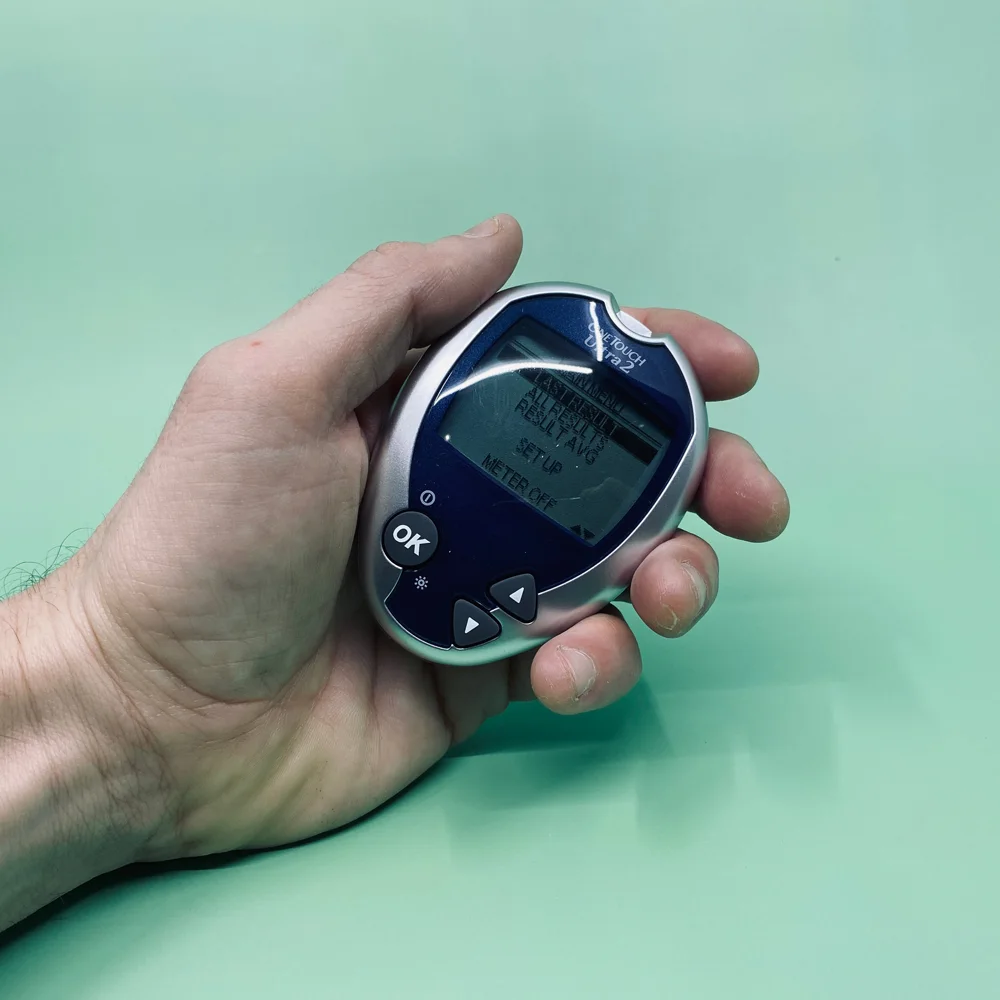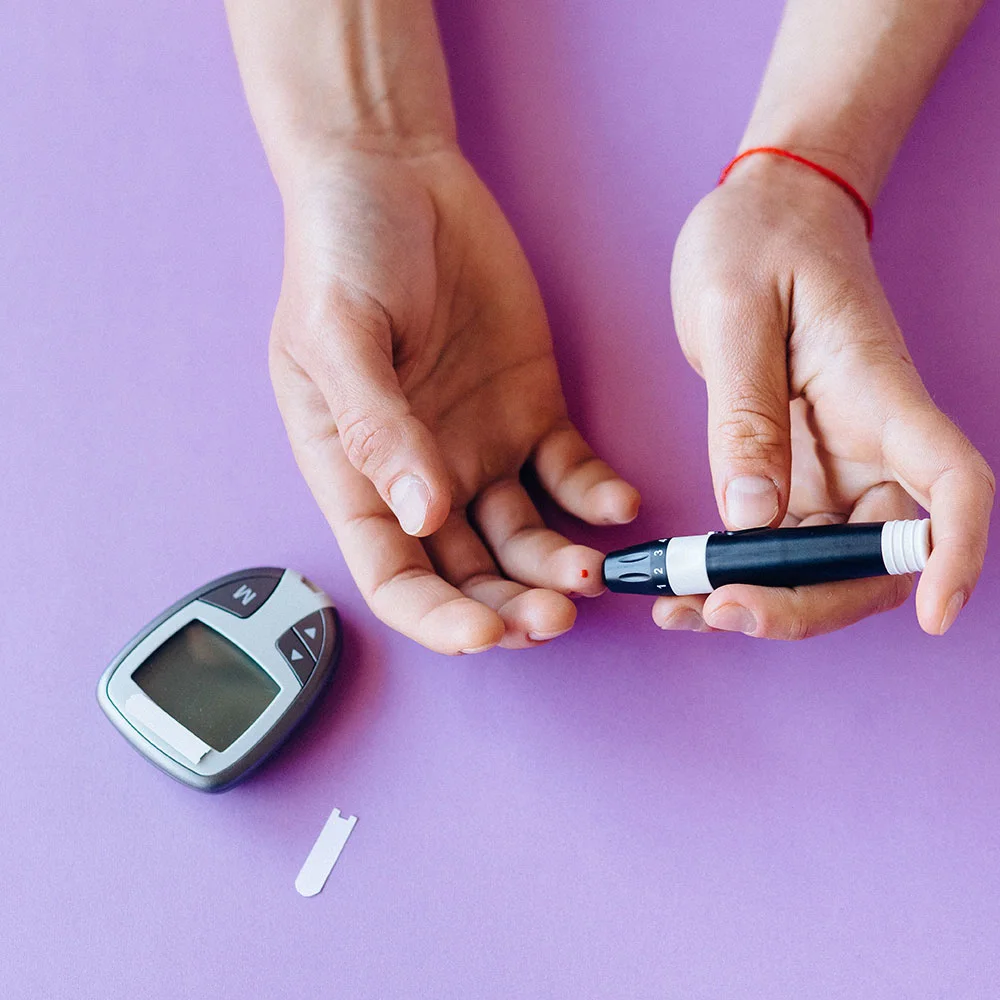Here's what we'll cover
Here's what we'll cover
Here's what we'll cover
Perhaps one of the most worrisome complications of diabetes mellitus is the possibility of needing to have a body part amputated. According to the Centers for Disease Control and Prevention (CDC), in 2014, 5 out of every 1,000 people with diabetes were hospitalized for lower-extremity amputations (CDC, 2017). That may not sound like a high percentage, but if you translate it into an actual number - 108,000 people with diabetes who received an amputation - the thought of it can be concerning. Here's another disconcerting factoid: people with diabetes are ten times more likely to require a lower extremity amputation than those without diabetes (Hoffstad, 2015).
These statistics are scary for sure, but why is this the case? It isn't immediately obvious why having diabetes would put somebody at an increased risk of having a toe cut off, or part of the foot, or the entire leg. How does high blood sugar - which occurs in diabetes - lead to amputations?
The first answer is that diabetes causes damage to blood vessels. This damage is because high levels of glucose and fatty acids in the blood lead to an increase in stressors that damage the lining of the blood vessels. This causes constriction of the vessels, inflammation, and clotting (thrombosis) (Lüscher, 2003). This leads to decreased blood flow and a condition called peripheral artery disease (PAD). If severe, PAD alone can lead to amputations. However, there is one other complication of diabetes that may play an important role in this process for some people: diabetic neuropathy.
What is diabetic neuropathy?
Diabetic neuropathy refers to nerve damage caused by diabetes. This nerve damage is typically associated with a loss of sensation (numbness), tingling, or pain in the feet. However, diabetic neuropathy can affect many other nerves in the body, as well.
How does diabetic neuropathy lead to needing an amputation? People with diabetic neuropathy may not be able to feel the bottoms of their feet. As a result, they may injure themselves without knowing it and may continue to put pressure on that injury. Also, people with diabetes are more likely to get infections. Combining these factors of an injury they can't feel, reduced blood flow to the injured area, and a higher likelihood of infection leads to a non-healing and infected wound (ulcer) on the foot. Depending on how severe, this may necessitate amputation to preserve as much healthy tissue as possible.
This situation refers to one type of diabetic neuropathy, called diabetic peripheral neuropathy. People with diabetes may also suffer from proximal neuropathy, focal neuropathies, or autonomic neuropathy. Let's take a step back and look at what causes diabetic neuropathy before diving into each of these subtypes.
What are the causes of diabetic neuropathy?
The causes of diabetic neuropathy are similar to the causes of peripheral artery disease. Higher levels of circulating glucose and fatty acids lead to chemical changes that can damage the nerves. Additionally, the reduced blood flow that results from damage to the blood vessels results in less oxygen and nutrients being delivered to the nerves. There may also be certain genetic risk factors that make some people with diabetes more likely to develop neuropathies (Witzel, 2015).
What are the signs and symptoms of the different types of diabetic neuropathy?
Peripheral neuropathy
Peripheral neuropathy is the most common type of neuropathy in those with diabetes and is the one we have already touched upon. It can cause numbness, tingling, nerve pain, and weakness that typically starts in the feet and legs but may also affect the hands and arms. Because you cannot feel your extremities as well, this may lead to a change in how you walk, loss of balance, and falls.
Proximal neuropathy
Proximal neuropathy (also called diabetic amyotrophy, radiculoplexus neuropathy, or lumbar polyradiculopathy) is a rare form of neuropathy that affects the nerves of the buttocks, hips, or thighs and can be disabling. Symptoms generally begin as severe one-sided pain followed by weakness, shrinking of the associated muscles, and weight loss. In some cases, it can occur on both sides. Symptoms may improve over time.
Focal neuropathy
Focal neuropathies (also called mononeuropathy) occur when there is an issue with a single nerve or a group of nerves. They may present in the face, torso, arms, or legs and may cause pain or muscle weakness. In the face, focal neuropathy can cause double vision or temporary paralysis of one side of the face (Bell's palsy). Another common form of focal neuropathy in people with diabetes can be due to compression of a nerve secondary to swelling, such as in carpal tunnel syndrome. This is called entrapment syndrome, and treatment may involve wearing a brace, taking anti-inflammatory medications, or surgery.
Autonomic neuropathy
Autonomic neuropathy involves damage to the autonomic nervous system. The autonomic nervous system is composed of the nerves that control the internal organs of the body. This is mostly done subconsciously (for example, you don't think about your digestive process - it just happens inside of you on its own). The exact symptoms of autonomic neuropathy depend on the specific nerves that are affected. According to the NIH, these include (NIDDK, 2018):
Cardiovascular system: Heart rate may increase or decrease, and you may feel lightheaded when you stand up
Digestive system: Bloating, constipation, diarrhea, difficulty swallowing, inability to control going to the bathroom, nausea, vomiting, slow stomach emptying (gastroparesis)
Genitourinary system: Incontinence, holding onto urine, urinary tract infections, erectile dysfunction, difficulty with ejaculation, vaginal dryness, sexual dysfunction
Overactive or underactive sweat glands
Changes in how the eyes adjust to light (such as a slowed response when you go into a dark room)
One of the more concerning issues with autonomic neuropathy is that it can cause a condition called hypoglycemia unawareness. Hypoglycemia unawareness occurs when a person with diabetes becomes hypoglycemic (meaning they have low blood sugar), but they don't feel the symptoms that are typically associated with hypoglycemia (e.g., sweating, racing heartbeat). This can be dangerous, and people who have hypoglycemia unawareness should check their blood sugar levels more frequently.
How is diabetic neuropathy diagnosed?
Diabetic neuropathy is typically diagnosed after talking to your healthcare provider about your medical history, your signs, and symptoms. If you are living with diabetes and you have any of the above symptoms, you may be suffering from diabetic neuropathy.
People with diabetes should have a diabetic foot exam annually. Your healthcare provider can perform this. Alternatively, you can see a podiatrist, which is a foot doctor. Whoever is performing the exam will first inspect the feet to see if there are any injuries that you are not aware of (which would be an indication that you have lost sensation in the feet). Another part of the exam is the monofilament test. During this test, your healthcare provider uses a tool that applies a ten-gram load to parts of the foot to determine if you can feel it. If you can't, you may have peripheral neuropathy. Although this test is widely performed, a review in 2009 and a review in 2017 found that the monofilament test might not be very effective at determining the presence of peripheral neuropathy (Dros, 2009; Wang, 2017).
Other tests can assess your nerve function:
Nerve conduction studies evaluate the speed of the electrical signals in your nerves
Electromyography (EMG) analyzes the electrical signals in your muscles
Autonomic testing looks for autonomic neuropathy
How is diabetic neuropathy treated?
Treatment of diabetic neuropathy focuses on controlling the painful symptoms and preventing neuropathy from getting any worse.
For pain control in peripheral neuropathy, recommended medications include amitriptyline/Elavil, duloxetine/Cymbalta (see Important Safety Information), pregabalin/Lyrica, or venlafaxine/Effexor (see Important Safety Information) (UpToDate, 2018). These medications come from classes of drugs that can also be used as antidepressants or to prevent seizures based on how they work on a molecular level. Medications from different classes can be used in combination if a single drug isn't adequately controlling symptoms. Some individuals may also benefit from applying capsaicin cream topically.
Other interventions may be effective for specific symptoms you are experiencing. If you develop wounds on your feet, proper foot care is critical; this includes keeping your feet clean and buying specialized shoes to offload the pressure from problem areas. If you develop issues with eating, having smaller meals may make it easier to keep things down. And if you have problems with urination, following a schedule may help. Sometimes people who have significant nerve damage causing bladder problems require catheterization.
How do you prevent diabetic neuropathy?
The hallmark of diabetic neuropathy prevention is achieving better glucose control. To accomplish this, stay compliant with your medications, attend all of your appointments with your healthcare provider, and regularly check your blood sugar levels (or pay attention to your hemoglobin A1c level when your healthcare provider checks it).
Lifestyle changes that you can make to achieve better glucose control include a diet rich in unprocessed foods, limiting alcohol intake, and getting exercise. See the Diabetes Treatment article to learn more about controlling your blood glucose levels.
Can diabetic neuropathy be reversed?
Diabetic neuropathy cannot be reversed. Some of the symptoms of proximal neuropathy may improve over time. Additionally, certain focal neuropathies (e.g., carpal tunnel syndrome) that can be fixed with surgery may feel like they have been “reversed.” In general, the damage that is caused to the nerves is permanent and progressive. The goal of therapy should, therefore, be the treatment of any symptoms and the prevention of further loss of function.
DISCLAIMER
If you have any medical questions or concerns, please talk to your healthcare provider. The articles on Health Guide are underpinned by peer-reviewed research and information drawn from medical societies and governmental agencies. However, they are not a substitute for professional medical advice, diagnosis, or treatment.
References
Centers for Disease Control and Prevention. (2017). Coexisting Conditions and Complications. Retrieved from https://www.cdc.gov/diabetes/data/statistics-report/coexisting.html
Dros, J., Wewerinke, A., Bindels, P. J., & Weert, H. C. V. (2009). Accuracy of Monofilament Testing to Diagnose Peripheral Neuropathy: A Systematic Review. The Annals of Family Medicine , 7 (6), 555–558. doi: 10.1370/afm.1016. Retrieved from https://www.ncbi.nlm.nih.gov/pubmed/19901316
Hoffstad, O., Mitra, N., Walsh, J., & Margolis, D. J. (2015). Diabetes, Lower-Extremity Amputation, and Death. Diabetes Care , 38 (10), 1852–1857. doi: 10.2337/dc15-0536. Retrieved from https://www.ncbi.nlm.nih.gov/pubmed/26203063
Lüscher Thomas F., Creager, M. A., Beckman, J. A., & Cosentino, F. (2003). Diabetes and Vascular Disease. Circulation , 108 (13), 1655–1661. doi: 10.1161/01.cir.0000089189.70578.e2. Retrieved from https://www.ahajournals.org/doi/full/10.1161/01.cir.0000089189.70578.e2
National Institute of Diabetes and Digestive and Kidney Diseases. (2018, February 1). Autonomic Neuropathy. Retrieved from https://www.niddk.nih.gov/health-information/diabetes/overview/preventing-problems/nerve-damage-diabetic-neuropathies/autonomic-neuropathy
UpToDate. (2018). Treatment of diabetic neuropathy. Retrieved from https://www.uptodate.com/contents/management-of-diabetic-neuropathy
Wang, F., Zhang, J., Yu, J., Liu, S., Zhang, R., Ma, X., Yang, Y., & Wang, P. (2017). Diagnostic Accuracy of Monofilament Tests for Detecting Diabetic Peripheral Neuropathy: A Systematic Review and Meta-Analysis. Journal of Diabetes Research , 2017 , 1–12. doi: 10.1155/2017/8787261. Retrieved from https://pubmed.ncbi.nlm.nih.gov/29119118/
Witzel, I.-I. E., Jelinek, H. F., Khalaf, K., Lee, S., Khandoker, A. H., & Alsafar, H. (2015). Identifying Common Genetic Risk Factors of Diabetic Neuropathies. Frontiers in Endocrinology , 6 . doi: 10.3389/fendo.2015.00088. Retrieved from https://www.ncbi.nlm.nih.gov/pmc/articles/PMC4447004/












